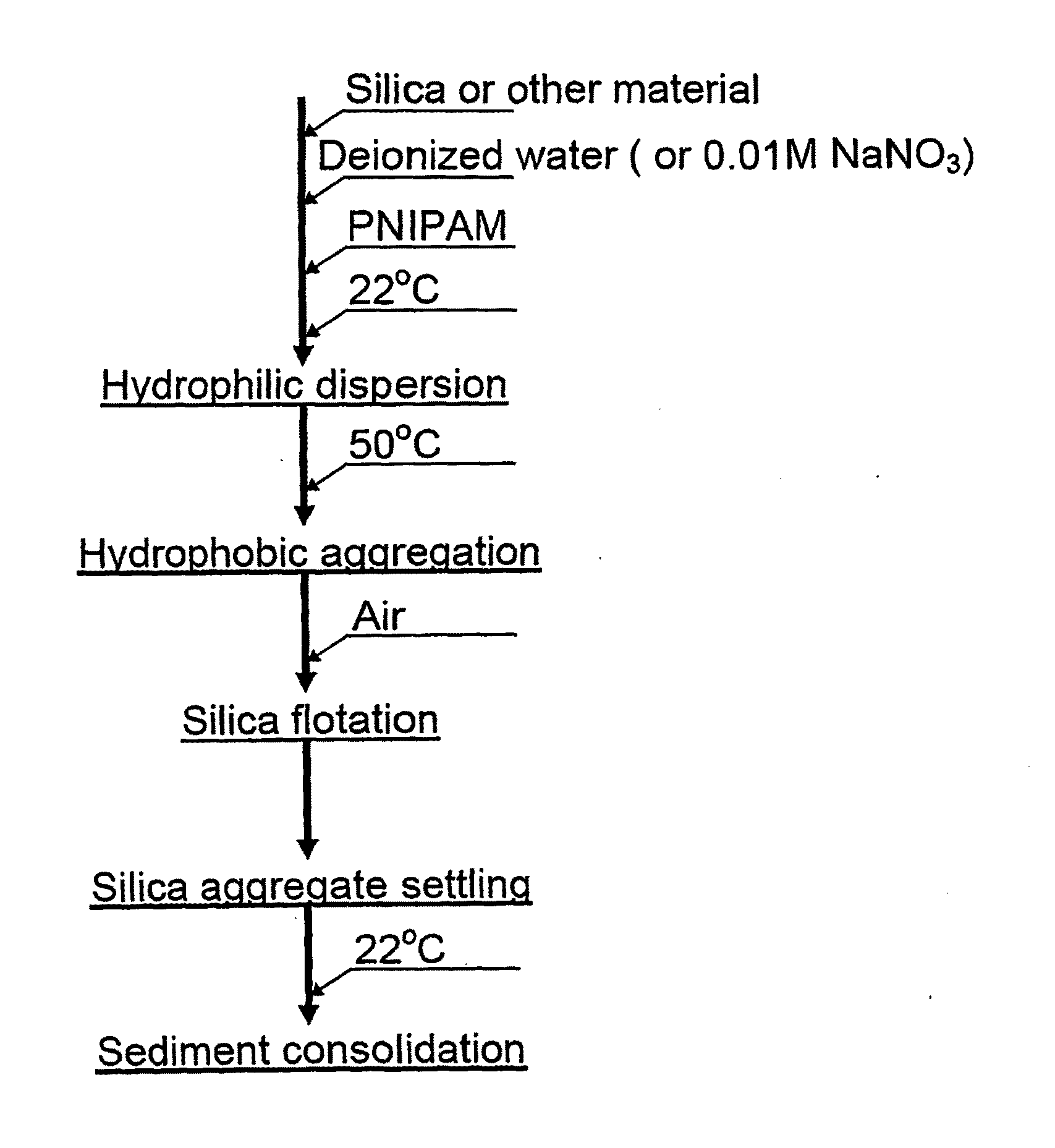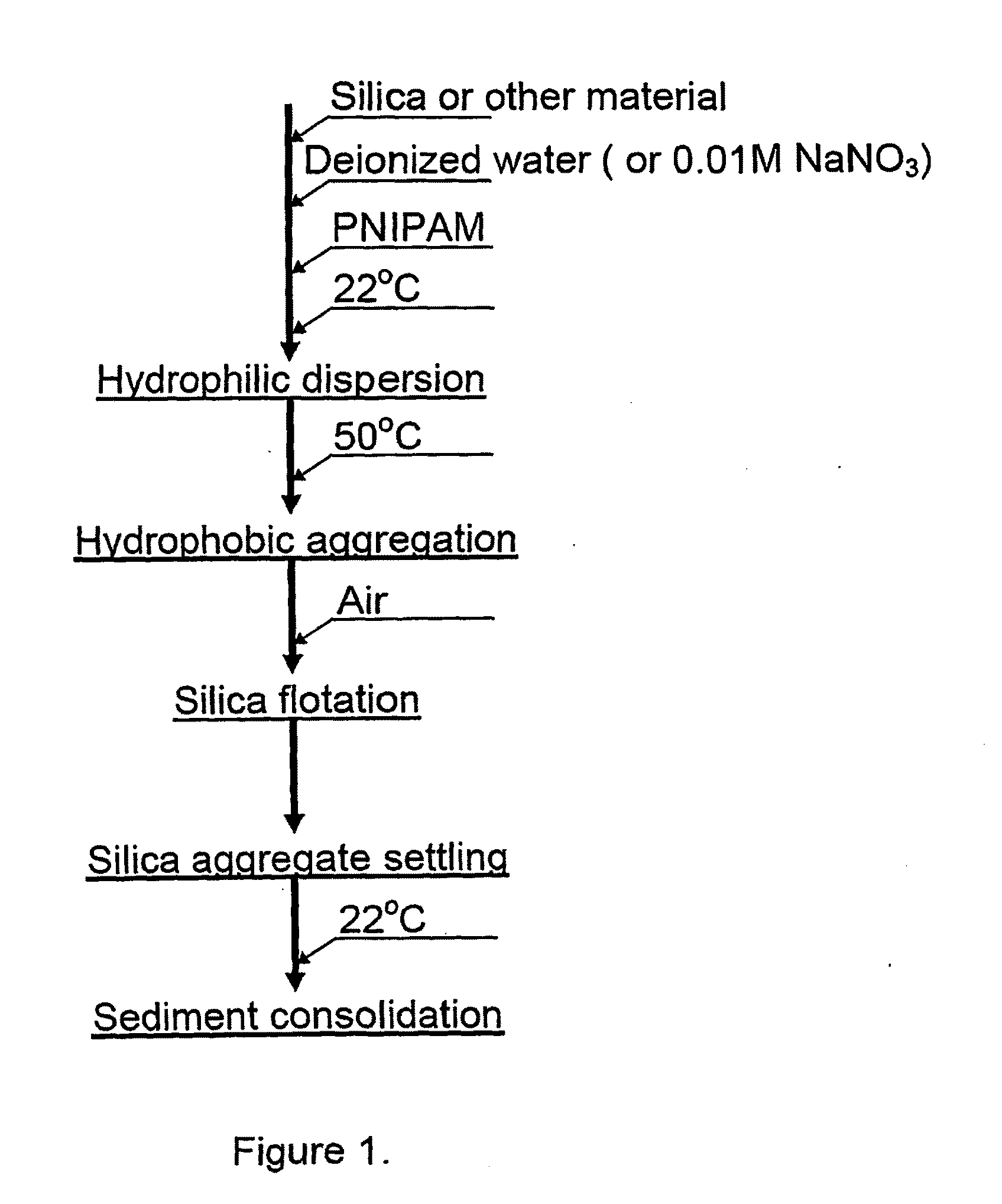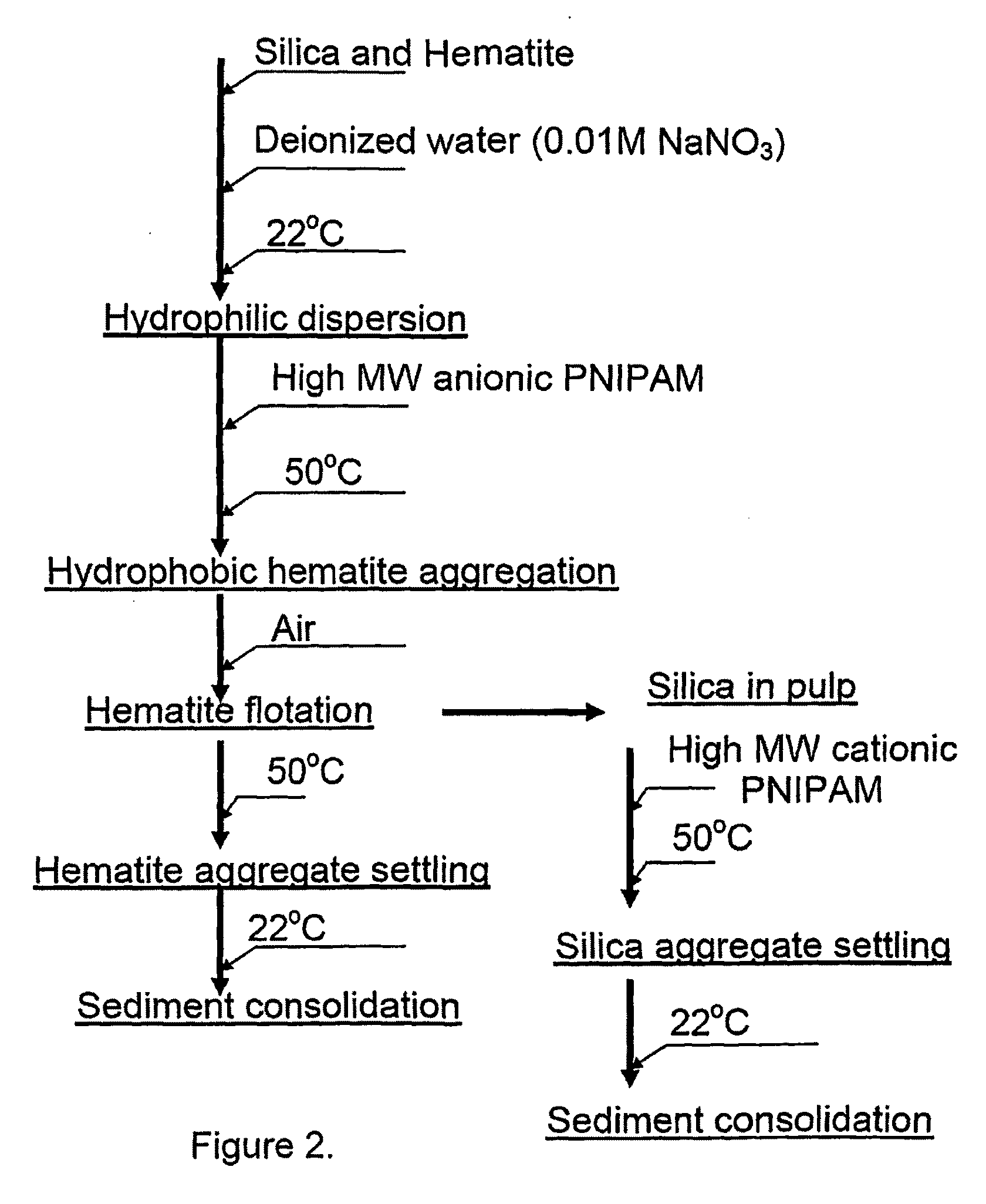Flotation aids and processes for using the same
- Summary
- Abstract
- Description
- Claims
- Application Information
AI Technical Summary
Benefits of technology
Problems solved by technology
Method used
Image
Examples
example 1
Polymer Synthesis
[0294]Homopolymer synthesis: Poly (N-isopropylacrylamide) (PNIPAM) was synthesized in our laboratory from N-isopropylacrylamide (NIPAM) (Waco Chemicals) using free radical polymerisation with Ammonium Persulfate (>98%, Aldrich, APS) as the initiator. NIPAM monomer was purified by dissolution in hexane and removing the inhibitor with an inhibitor-removal column (Aldrich), followed by repeated re-crystallizations. All glassware was acid-base washed using laboratory grade solutions and deionised water. In a three inlet round-bottom glass reactor, 10 g of NIPAM was dissolved in the appropriate amount of water (pH 3 + / −0.1) using a magnetic stirrer (200 RPM). The three inlets were used for Argon (High Purity, BOC) input, an addition funnel and a condensing tube. The reactor was half-immersed in a water bath to maintain a temperature of 25° C. A stock solution of APS of appropriate concentration and volume was added to the addition funnel subsequent to which both the addi...
example 2
Polymer Behavior in Solution During a Temperature Cycle
[0297]FIG. 3 shows photographs of a solution of 3.6 M Da MW, 0.01 wt % solution of poly(N-isopropylacrylamide) (poly(NIPAM) at various temperatures as indicated in the figure. Poly NIPAM is soluble at room temperature due to the hydrating ability of water molecules. When the temperature is increased to above a certain temperature called critical solution temperature (CST), some physical changes in the hydrogen bonding of water to the polymer and the conformation of the PNIPAM chains take place. As one can see from the photos shown in FIG. 3 the polymer becomes less soluble as the temperature is increased above the critical temperature. Starting from low temperature (T3-C, indicating the polymer's transition to hydrophobic. Finally when the temperature was maintained higher than the CST, the whole solution became totally opaque (FIG. 3-D). The transition is reversible such that when the temperature is reduced below 32° C. the sol...
example 3
Polymer Hydrophobicity in Aqueous Solution
[0298]A stock solution of Pyrene (Aldrich) in ethanol was used to dose aqueous solutions of the 3.6 M Da PNIPAM synthesized as described in Example 1 to a Pyrene concentration of 5 μM. After evaporating the ethanol by bubbling Argon through the samples for 30 minutes, the fluorescence intensities of samples in 10 mm clean quartz fluorescence cuvettes was read using a Cary-Eclipse Fluorimeter with excitation at 330 nm wavelength and scanning from 335 nm to 700 nm. As established by Glushko and coworkers (Glushko et al., 1981) the intensity ratio of the first and third peaks (I1 / I3) which occur at 373 nm and 384 nm respectively, decreases with increasing hydrophobic interaction. Hence, the relative degree of hydrophobic interaction occurring within solution can be determined. PNIPAM solution concentrations of 0, 12, 128, 1287 ppm were investigated. FIG. 4 shows the result of the ratio of I1 to I3 at each polymer concentration as a function of ...
PUM
| Property | Measurement | Unit |
|---|---|---|
| Temperature | aaaaa | aaaaa |
| Sensitivity | aaaaa | aaaaa |
| Hydrophilicity | aaaaa | aaaaa |
Abstract
Description
Claims
Application Information
 Login to View More
Login to View More - R&D
- Intellectual Property
- Life Sciences
- Materials
- Tech Scout
- Unparalleled Data Quality
- Higher Quality Content
- 60% Fewer Hallucinations
Browse by: Latest US Patents, China's latest patents, Technical Efficacy Thesaurus, Application Domain, Technology Topic, Popular Technical Reports.
© 2025 PatSnap. All rights reserved.Legal|Privacy policy|Modern Slavery Act Transparency Statement|Sitemap|About US| Contact US: help@patsnap.com



